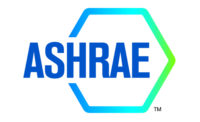The report, Risk Management Guidance for Health and Safety Under Extraordinary Incidents, was delivered at ASHRAE's 2002 Winter Meeting held in Atlantic City, NJ, Jan. 12-16. The report was written by the society's Presidential Study Group on Health and Safety Under Extraordinary Incidents, which was appointed after the attacks of Sept. 11 and subsequent events.
"Most of the recommendations included in this report are common sense measures that owners and managers should already be following," said ASHRAE President William Coad, P.E. "Much of the guidance given by ASHRAE relating to acceptable indoor environments, human comfort, and safety also serves to protect the health and safety of building occupants under extraordinary incidents."
The group made three preliminary recommendations for owners and managers of existing buildings:
- Understand the capabilities of buildings and their systems;
- Assure that buildings are performing as intended;
- Do not make changes to building performance unless the consequences are understood.
"Building owners and occupants may now be willing to redirect resources to enhance building performance to further reduce occupant risk associated with extraordinary incidents, while continuing to provide acceptable indoor environments, with energy efficiency and cost effectiveness during normal conditions," James Woods, Ph.D., P.E., chair of the study group, said.
The report includes a list of major systems, components and processes that should be considered as safety issues associated with extraordinary incidents in most existing buildings. These include ventilation system operation, filter efficiency and bypass, quantity of outdoor air, controlled access to air handling components, securing of likely entry points, fire protection and life safety, building shell and duct tightness, areas of refuge, and preparedness plan.
The group also made three recommendations regarding actions that should not be taken without consulting a professional engineer:
- Do not close outdoor air intake dampers or otherwise block ventilation air paths;
- Do not change the designed airflow patterns or quantities;
- Do not modify the fire protection and life-safety systems without approval of the local fire marshal.
A copy of the report is available on ASHRAE Online, www.ashrae.org.






